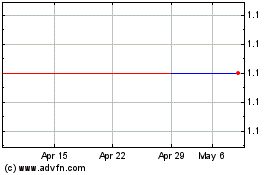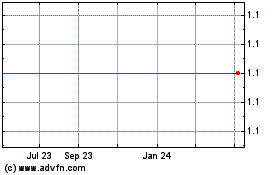IMILOR OIL FIELD, Russia—In the frosty swamplands of West
Siberia, the drilling rigs of oil giant OAO Lukoil are helping
raise Russia's oil output to its highest levels since the breakup
of the Soviet Union a quarter century ago.
But falling crude prices, U.S.-led sanctions and diminished oil
exploration threaten Russia's oil industry and raise questions
about its capacity to continue underwriting President Vladimir
Putin's ambitions at home and abroad.
While recent increases in Russian oil output have helped cushion
the sharp price fall, Mr. Putin is so squeezed for cash, his
government postponed a planned reduction in oil-export duties this
year. Executives say they fear the postponement could be extended,
diverting money to Moscow that could be invested in new drilling
and exploration to supplement aging oil fields.
"We will have to limit our spending and that will lead to a fall
in production," Lukoil Chief Executive Vagit Alekperov said in an
interview at the Russian company's international headquarters in
Vienna.
Russian officials acknowledged that the higher-than-planned
taxes could lead to a decrease in investment and production, but
said they were needed for the budget.
U.S. and European sanctions over the past 18 months also weigh
on Russia's future prospects by choking Western financing for
exploring potential finds in the Arctic Ocean and for tapping
Siberian shale formations.
Oil and natural gas revenues make up about half of Russia's
federal government revenue, and exports account for one-third of
national output. Energy revenues are central to Mr. Putin's power
as he faces off with the West over Ukraine and the 2014 annexation
of Crimea. He has deployed military forces in Syria's war to back
President Bashar al-Assad.
Oil money extends Mr. Putin's reach, allowing him the financial
resources to issue cheap loans to favored leaders and pay for
military adventures abroad.
Output expansion
Mr. Putin oversaw rapid expansion of an oil industry crippled by
the fall of the Soviet Union. Production in Russia fell as low as
6.1 million barrels a day in 1996, compared with a Soviet-era high
of 11.4 million a day in 1987.
As oil prices and production rose in the 2000s, Mr. Putin
expanded social spending to improve Russian living standards,
cementing his position as an autocrat and winning approval ratings
that at times exceeded 80%.
Mr. Putin said at the end of last year that the price of $50 per
barrel of crude used to calculate Russia's 2016 budget was too
optimistic, and ministers have in recent weeks warned of spending
cuts and, potentially, "prolonged stagnation." Oil prices slid
below $30 a barrel last week before rebounding.
Russia's energy revenues are also under threat from new
competition in Europe, where it provides about a third of natural
gas supplies. The first shipments of U.S. liquefied natural gas are
expected to start arriving in Europe this spring, with the
potential to weaken Moscow's energy hold. Russian officials say
U.S. gas will be too expensive to compete.
Few see an immediate threat to Mr. Putin. The U.S. and European
sanctions successfully hobbled new sources of Russian oil
production—the Arctic and shale oil—but have had little short-term
impact on output. They were imposed in 2014, when oil prices were
close to $100 a barrel and the worry was of global supplies falling
short of demand.
China, not a party to the sanctions, sells Russia the supplies
and equipment it needs to boost production at existing oil fields,
such as here in Imilor, where rigs helped Russia last year produce
10.73 million barrels a day of oil and gas condensate, a type of
ultra light crude, up from 10.58 million barrels a day in 2014.
Lukoil and state-owned OAO Rosneft—Russia's largest producer—are
flush with cash and generating sufficient funds to meet dividends,
while some of their U.S. and European counterparts are struggling
to cover spending and dividends. Some Russian oil company shares
increased, even as profits fell, while Western energy companies'
stocks have generally declined.
Without new investment, Russia's oil future is less bright. In
West Siberia, where some two thirds of the country's oil is
produced, companies battle declining production rates after decades
of oil extraction. "It's unlikely we can stabilize production in
West Siberia," said Mr. Alekperov of Lukoil. "We can only slow the
decline."
The Russian Energy Ministry forecasts that national oil
production will remain at current levels through 2035. The
International Energy Agency, a Paris-based monitor of energy
trends, expects Russian oil output to stop growing this year. By
2020, Russian oil production could fall to 10.5 million barrels a
day, the IEA said, and sink to 9 million barrels a day by 2040.
"Russian oil production has been very resilient, but I don't
think we can have production forever at this level with low oil
prices and sanctions restricting access to Western finance and
technology," said Fatih Birol, the IEA's executive director.
Russian oil companies have benefited from three factors that may
not last: an industry-friendly taxation system, cheap production
costs and the devaluation of the ruble.
Russia's tax system has helped shield oil companies from the
worst of the price drop. Russia's two main oil production
levies—the export duty and the mineral extraction tax—are pegged to
price. Last year, the government's share fell with oil prices, but
companies still earned after-tax revenues averaging $13 per barrel
of oil, according to a report from Citigroup.
Ronald Smith, a Moscow-based oil analyst at Citigroup, said
after-tax revenues from oil production have been "relatively stable
in Russia because of the tax regime."
The Russian government is considering tax changes the industry
opposes. The finance ministry has said it could take an additional
200 billion rubles in taxes, about $3.6 billion, from the oil
industry this year, mostly by temporarily abandoning plans to
reduce export taxes.
Oil executives and Russia's energy minister warned this could
reduce investment and cause production to fall, especially if oil
prices don't recover and the government extends the measure into
next year.
Some companies, however, are optimistic they can produce more
because much of Russia's oil is onshore, making it relatively cheap
to pump.
Gazprom Neft, the oil arm of the state gas company, PAO Gazprom,
can make a profit on oil extracted from existing fields even if the
oil price falls to $15 per barrel, chief executive Alexander Dyukov
told state TV in December.
Russia's currency, the ruble, provided a lift for oil companies
when it plunged in value after imposition of U.S.-led sanctions and
the initial drop in oil prices in 2014. It has since largely risen
and fallen with oil prices, touching a record low Thursday of
almost 86 to the U.S. dollar. Before Russia invaded Ukraine, a
dollar bought 35 rubles.
The devaluation of the ruble has slashed costs for an industry
that generally sells its crude oil for dollars and pays its workers
and buys equipment with Russian currency. Lukoil told investors in
November that its costs for getting oil out of the ground had
decreased by around a third in the first nine months of 2015,
compared with a year earlier. The ruble depreciated about 40% over
the same period, encouraging a switch to cheaper Russian
suppliers.
"If before we could buy two Russian pumps for the price of one
Western one, now we can buy four," said a reservoir engineer
working at one of Rosneft's giant oil fields in east Siberia.
The savings has allowed Lukoil to increase its capital
expenditure in rubles as U.S. and European oil companies reduced
their spending by billions of dollars.
The extra rubles aren't just buying cheap pumps. They have also
helped fuel the burgeoning use of such Western technology as
horizontal drilling and hydraulic fracturing in oil formations not
targeted by sanctions.
Horizontal drilling last year made up about a third of all
drilling in Russia, up from 11% in 2010, according to CDU TEK, the
monitoring agency at Russia's energy ministry. Such wells are
drilled parallel to an oil or gas formation and can boost yields as
much as five times that of a vertically drilled well. It is a
technique that helped fuel the U.S. oil boom of the past few
years.
"Russia was late to this," said Sergei Alekseev, director of
marketing at TMK, Russia's largest manufacturer of steel pipes for
the oil industry. "But now we see it everywhere."
The technology has allowed Russia to squeeze more oil out of
older fields across Russia and particularly in Siberia, where
Lukoil is pumping at Imilor, but is only staving off the
inevitable, executives said. Many of the big West Siberian oil
fields have produced for more than five decades and yield less
every year.
Output across the Khanty Mansiysk region, which includes Imilor
and accounts for just under half of Russia's output, fell 2.8% in
the first 11 months of 2015 versus a 1.6% decline for 2014 overall,
according to IHS Energy, a consulting firm.
At Rosneft's Varyeganneftegaz division in West Siberia, oil
production has fallen almost 6% in the first nine months of 2015
compared with the same period a year earlier. Rosneft posted a
crude oil production decrease of 1% in the same nine-month period
because of declines in older fields, despite new output from
offshore projects and East Siberia.
Uncertain future
Moscow had hoped the country's vast shale oil would drive new
production over the next five to 10 years, followed by the Arctic.
Russian companies signed deals with Western firms to obtain needed
technology and expertise.
Sanctions have largely put those plans on hold. In 2014, Exxon
Mobil Corp. suspended exploration work with Rosneft in the Kara Sea
in the Arctic, while France's Total SA and Royal Dutch Shell PLC
have halted plans to tap shale oil in West Siberia.
(MORE TO FOLLOW) Dow Jones Newswires
January 25, 2016 07:35 ET (12:35 GMT)
Copyright (c) 2016 Dow Jones & Company, Inc.
PJSC Gazprom (PK) (USOTC:OGZPY)
Historical Stock Chart
From Mar 2024 to Apr 2024

PJSC Gazprom (PK) (USOTC:OGZPY)
Historical Stock Chart
From Apr 2023 to Apr 2024
